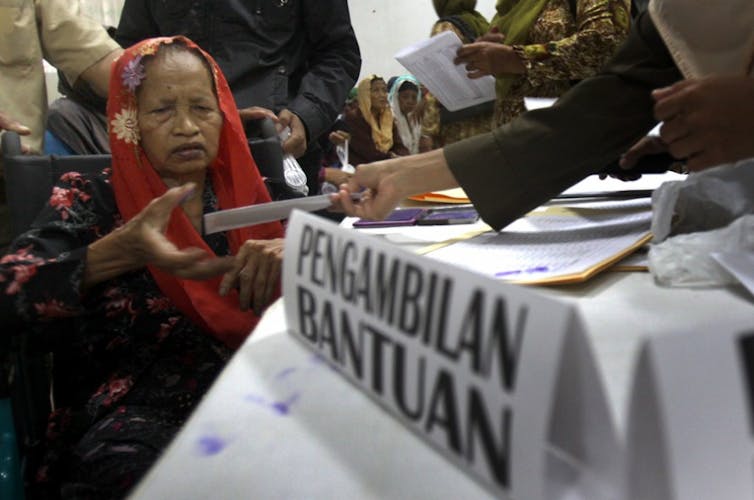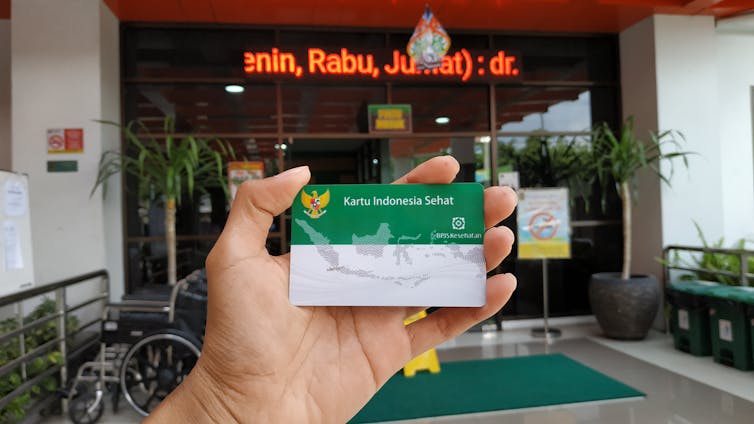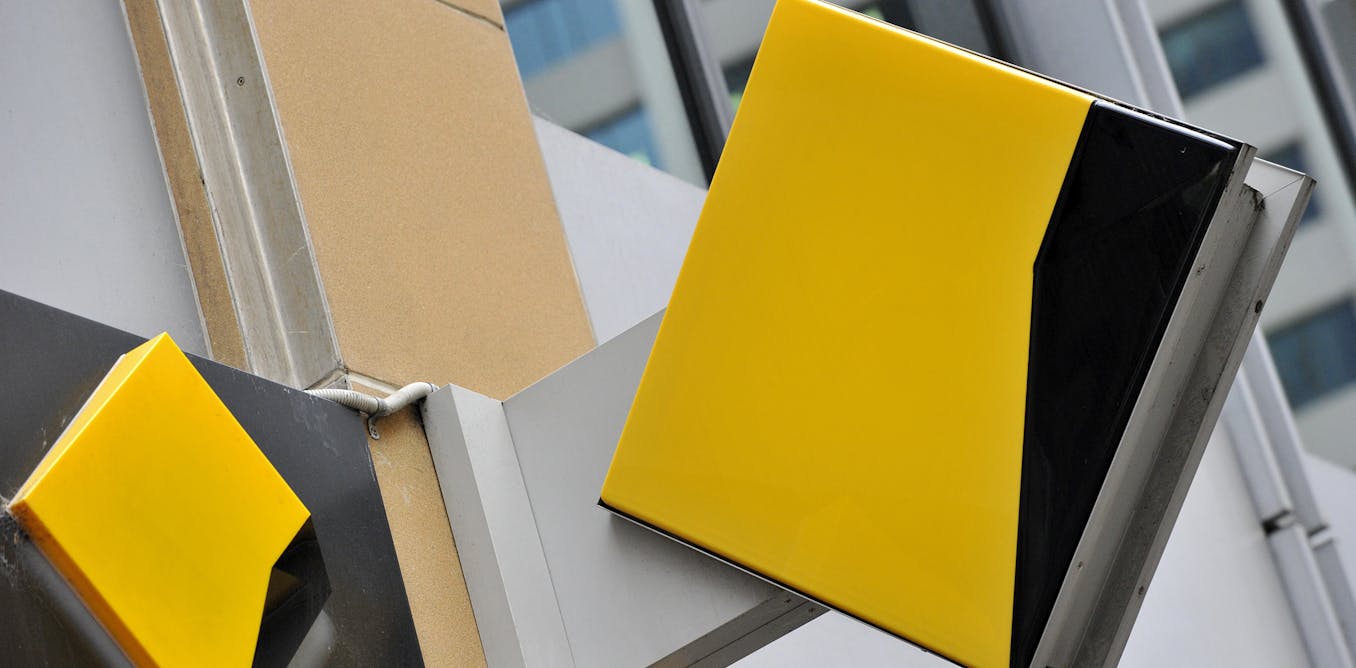Indonesia made historical past simplest two years in the past through attaining the milestone of a single-digit poverty price for the primary time since independence in 1945.
The proportion of the ones underneath the poverty line – with earning of not up to US$2.50 in step with day – fell underneath 10% (9.82%) on the nationwide stage for the primary time in March 2018.
Following the COVID pandemic, there’s fear that poverty may just as soon as once more upward thrust and opposite years of sure traits.
In accordance with a simulation through our group on the Nationwide Construction Making plans Company (BAPPENAS), with out intervention the poverty price will build up to ten.54%. This is able to suggest a three.63 million upward thrust within the general selection of deficient other folks.
Learn extra:
With out intervention, type presentations COVID-19 will drag no less than 3.6 million Indonesians into poverty
If this occurs, even this modest build up will imply Indonesia falls neatly wanting the objective poverty price of 8.5-9.0% through the tip of 2020, which used to be set through the Annual Executive Operating Plan 2020.
We spotlight some classes Indonesia can take from beyond poverty alleviation efforts to cut back the adversarial results of the pandemic at the deficient.
Contents
What we will study from beyond systems
Poverty in Indonesia has long past thru 3 distinct levels: the New Order technology (Nineteen Seventies-2000), the Millennium Construction Objectives technology (2000-2015) and the Sustainable Construction Objectives technology (2015-present).
Beneath the New Order, one of the crucial major methods underlying Indonesia’s good fortune used to be offering elementary services and products akin to training and well being to the entire inhabitants. The vast majority of the deficient had in the past lacked get admission to to those services and products.
Those insurance policies brought about the poverty price to plummet from 40% to 11.3% between 1976 and 1996.
Straight away following the 1997-98 Asian Monetary Disaster, the federal government expanded social protection nets and arrange new systems.
The sort of used to be the “rice for the deficient” (OPK) program in 1998. It progressively changed into the Staple Meals Program (Kartu Sembako) in 2018.
In 2007, the Susilo Bambang Yudhoyono management presented a money switch scheme referred to as the Circle of relatives Hope Program (PKH). It additionally arrange medical health insurance for the deficient, a scheme that changed into the bedrock of the Nationwide Well being Insurance coverage (JKN) that we all know as of late.
From the ones systems, we now have realized two classes that the federal government will have to heed to minimise the affects of the pandemic at the deficient.
1. Insurance policies with out protection nets go away the deficient vulnerable to shocks
Even if the New Order govt’s intensive enhancements to elementary services and products lifted about 32 million other folks out of poverty, insurance policies from this period didn’t be offering the deficient a lot coverage towards financial shocks.
Social insurance coverage schemes have been restricted to govt and military officers. There used to be no systematic social help or insurance coverage for the inclined inhabitants.
A staff insurance coverage scheme (JAMSOSTEK) presented in 1992 – masking injuries, illness, loss of life, previous age and pension – additionally enrolled formal staff simplest. The bulk casual staff have been left unprotected.
When the 1997-98 monetary disaster hit Indonesia the inclined inhabitants used to be critically harm. The disaster plunged greater than 15 million other folks again into poverty.
2. Make bigger protection to as many deficient other folks as conceivable
Studying from the disaster, the federal government carried out a brand new mindset to poverty alleviation: extend coverage to as many deficient other folks as conceivable.
For example, money transfers to the deficient underneath the Circle of relatives Hope Program got here with quite a few prerequisites, akin to necessary training for the youngsters of recipient families and provision of maternal take care of pregnant moms.
Beginning out with simplest 390,000 families on the finish of 2007, this system grew to hide greater than 11 million throughout the subsequent ten years.

Wikimedia Commons, CC BY
Indonesia’s first medical health insurance device for the deficient (ASKESKIN) used to be additionally arrange in 2005. After years of enlargement and adjustments, it merged with different an identical systems into the unified Nationwide Well being Insurance coverage (JKN).
As of late, it’s the greatest common medical health insurance scheme on the planet. With about 224 million individuals – together with 96 million deficient people – it covers about 84% of the Indonesian inhabitants.
Those social protection nets helped force the secure decline of the poverty price between 2010 and 2019 – putting in a snappy restoration after the 2008 monetary disaster – till the velocity reached unmarried digits (9.82%) in March 2018.
Throughout the similar length, the multidimensional poverty price – accounting for facets akin to sanitation, vitamin and training – additionally fell considerably.
Are we able to be extra constructive this time?
In comparison to the 1998 disaster, Indonesia is healthier ready this time.
For example, the federal government is now supplied with a unified database masking all the backside 40% of Indonesians. Management of the Staple Meals Program (Kartu Sembako) has additionally been digitised. This will increase the state’s capability with regards to protection and accuracy.

(Shutterstock)
According to the pandemic – and construction on poverty alleviation methods arrange in earlier years – the federal government handed a aid bundle of greater than US$26 billion.
It comprises an build up of about 25% in the advantages gained through the ones coated through the Circle of relatives Hope money switch program. It is going to now be disbursed per month, as a substitute of each 3 months.
The street forward
Even so, Indonesia’s good fortune in curtailing the selection of the brand new deficient throughout the pandemic nonetheless hinges on two components.
First, single-digit poverty charges are extra life like if the federal government’s annual GDP enlargement goal of two.3% is maintained. On the other hand, the International Financial institution has revised its forecast for 2020 from the preliminary 5.1% to a miles decrease 2.1%.
Bearing in mind the opportunity of a nil enlargement price, BAPPENAS estimates recommend a quite upper poverty price of 9.81% even with the prevailing interventions.
2nd, the native govt will have to be extra pro-active in figuring out and concentrated on the brand new deficient, who most commonly paintings in casual sectors.
After 3 months of social help, introducing financial empowerment systems for the ones in casual sectors is very important to assist them when the economic system restarts.
Given the precarious state of the pandemic, no poverty projections will also be sure. Without reference to the federal government’s stimulus bundle, poverty may just nonetheless build up, no less than within the brief time period, if GDP enlargement turns damaging.
However coverage responses to beyond financial crises have left at the back of a complete social protection internet. Those schemes will also be leveraged to minimise the impact of the COVID-19 pandemic and convey the rustic again to pre-pandemic poverty figures.
Supply By way of https://theconversation.com/what-can-indonesia-learn-from-past-policies-to-prevent-another-poverty-hike-during-the-pandemic-136702



